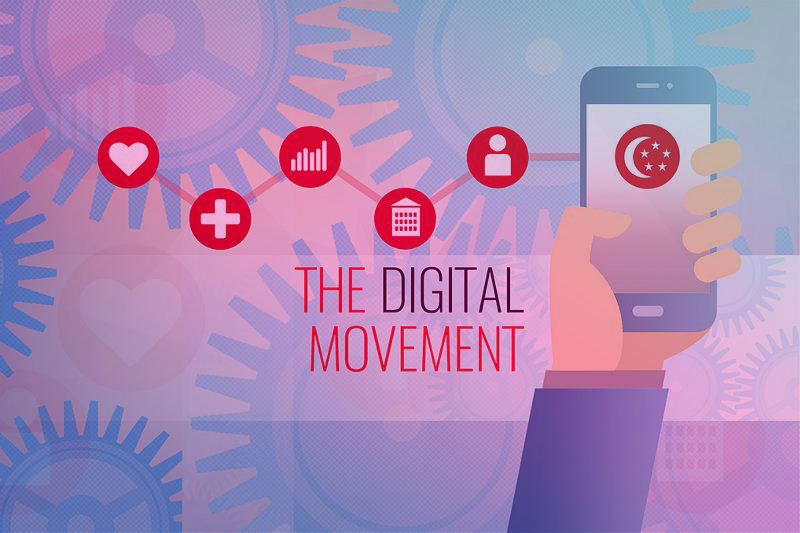In the early part of this century, Marc Andreessen was prophetic in saying that “software is eating the world.”
Today, the truth lies before us. More and more major businesses and industries are being run on software and delivered as digital services – from music to toys to medical services to national defence. Many of the winners are Silicon Valley-style entrepreneurial technology companies that are invading and overturning established industry structures.
Unfortunately, most governments are still playing catch-up and risk losing relevance to citizens in the digital space. The digital divide is getting wider by the day.
However, there is hope. A new breed of non-government natives is leading the digital movement to improve user experience, citizen engagement and build digital communities. From the United States and the United Kingdom to Scandinavia to Singapore, collaborations between government officials, technopreneurs and digital natives are creating a new digital economy based on software, data and things. In Singapore, the creation of the Government Technology Agency, or GovTech, for short, is a strong signal that the Singapore Government will play a significant role in the digital movement to amplify the rallying cry of Smart Nation. Indeed, software is eating government.

In 2014, when I first joined the public sector, I realised that my colleagues used to look at me quizzically whenever I mentioned “customers.” All the work we were doing was based on an “inside-out,” government-centric view of the world.
The transformation from an “inside-out” to an “outside-in” view of the world through the eyes of citizens is happening quickly. More and more services are being designed with the citizen’s needs in mind, cutting through most of the friction and bureaucracy that is synonymous with government.
For example, some people find it difficult to know the right agency to report an issue to government. Be it a choked drain or a dead animal or a fallen tree, which is the right agency to deal with the problem?
In 2015, an outside-in approach was taken to solve this problem, and the OneServiceapp was created to simplify citizen interaction with government. The focus on user experience and design thinking has helped changed the mindsets of many around us, and made us realise that we are citizens, too. Being citizen-centric, anticipatory and demand-focused is transforming the way we approach all new services and the way government is engaging citizens – software-driven or otherwise. It will continue to change our operating paradigm in the years to come.

At GovTech, our focus is on applied innovation. Distinguishing hype from reality is a very fine line. Using proven technology in an innovative way to solve citizen problems – that is what we do. We cannot afford the bleeding edge of innovation. Most of the time we have proven that it need not be expensive to disrupt.
Recently, we were presented with the need for an Intelligent Virtual Assistant to augment our search capabilities in government services. Many solutions were presented, ranging from intelligent FAQs to complex cognitive computing. The initial instinct was to push the edge of technology and experiment with the most complex solutions. However, we re-examined the needs of agencies and concluded that a S$20,000 solution would essentially fulfil the use-case of most agencies. We made it happen in four months. It was disruptive, practical and served the needs of many agencies without breaking the bank. Defying the conventional wisdom that innovation has to be state-of-the-art, cost a lot of money and “cure cancer” in one fell swoop has allowed us to shorten the innovation cycle and keep delivering value.

The digital movement is a war for talent. The image of tech specialists as “factory workers” in the sweat shops of developing countries is slowly being replaced by “master craftsmen” at Google and Facebook with degrees from Stanford and the Massachusetts Institute of Technology. The game has changed from cost leadership to differentiation as described by Michael Porter in his book Competitive Advantage.
Government faces an uphill task in attracting world-class tech talent. In terms of compensation, prestige, infrastructure and culture, there is no way to match the likes of the Silicon Valley firms or startups. When we built Hive@Sandcrawler a year ago, it was conceived as a startup-like organisation with the culture to match any Silicon Valley firm. Talented engineers joined us because of a strong sense of purpose in doing good for society and a free hand to make things happen.
Hive managed to attract more than 100 tech talents in a short period of time because of its collaborative culture, sense of purpose and impactful work. Using technology to save lives, create a better environment, solve social issues and build digital communities is something the private sector cannot offer. In 2015, we launched a crowdsourcing app for lifesavers called myResponder. To date, whenever a life is saved because of the assistance of that app, the team at Hive would actually cheer and celebrate. There is no greater impact than contributing to life-saving.
The abundant availability of data makes the government a “candy store” for data scientists and digital warriors. There is a place for tech talent in government and many countries have shown that it is possible and sustainable to create a technical core. In Singapore, GovTech is leading the charge to rebuild tech capabilities in the public sector.

In the digital movement, it is apparent that the only way to stay relevant is to stay agile. Agile is not just a software development concept; it is embedded into the culture of all customer focused companies. Making the paradigm shift in government to become more customer focused, necessitates a shift to agility. This fundamental shift is very difficult for all governments as the status quo is based on stability and predictability. The emergence of a bi-modal organisation is key to success.
The agility movement needs not threaten the stability of day-to-day operations. The two modes are like two sides of a coin and must co-exist for the government to function properly. Both modes are important. One of the biggest challenges is to build collaboration between the two modes to become mutually reinforcing instead of mutually destructive. Everyone can be successful as this is not a zero-sum game. Mode one is focused on operational effectiveness and stability; mode two is focused on transformation. Both modes can be agile and innovative in the pursuit of their common goal to serve the citizen.
The digital movement is here to stay and government is not excluded from this revolution. It is heartening to see that many governments are taking this movement head on and transforming its relationship with citizens digitally. Government will probably never be like an Amazon or Facebook because the roles are different. People go to commercial organisations because they want to. Most of the time people go to government because they have to. At least when they have to come to government, it is a pleasant and productive experience. And GovTech will aspire to do that for all the citizens in Singapore.
Originally written on Public Service Division, Singapore by Mr Chan Cheow Hoe

